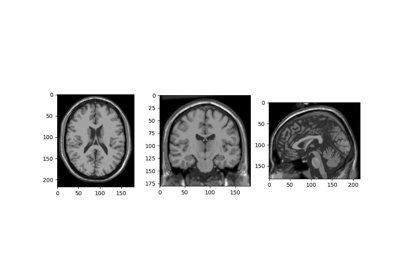MRIStackedNUFFT#
- class mrinufft.operators.stacked.MRIStackedNUFFT(samples: ndarray[tuple[int, ...], dtype[_ScalarType_co]], shape: tuple[int, int, int], backend: str | FourierOperatorBase, smaps: ndarray[tuple[int, ...], dtype[_ScalarType_co]] | None, z_index: Literal['auto'] | ndarray[tuple[int, ...], dtype[_ScalarType_co]] | None = 'auto', n_coils: int = 1, n_batchs: int = 1, squeeze_dims: bool = False, **kwargs)[source]#
Bases:
FourierOperatorBaseStacked NUFFT Operator for MRI.
The dimension of stacking is always the last one.
- Parameters:
samples (array-like) – Sample locations in a 2D kspace
shape (tuple) – Shape of the image.
z_index (array-like) – Cartesian z index of masked plan. if “auto” the z_index is computed from the samples, if they are 3D, using the last coordinate.
backend (str or FourierOperatorBase) – Backend to use. If str, a NUFFT operator is initialized with str being a registered backend. If FourierOperatorBase, operator is checked for compatibility and used as is notably one should have:
n_coils = self.n_coils*len(z_index), squeeze_dims=True, smaps=Nonesmaps (array-like) – Sensitivity maps.
n_coils (int) – Number of coils.
n_batchs (int) – Number of batchs.
**kwargs (dict) – Additional arguments to pass to the backend.
Methods
__init__Adjoint operator.
check_shapeValidate the shapes of the image or k-space data against operator shapes.
compute_densityCompute the density compensation weights and set it.
compute_smapsCompute the sensitivity maps and set it.
data_consistencyCompute the gradient data consistency.
Return the Lipschitz constant of the operator.
make_autogradMake a new Operator with autodiff support.
make_deepinv_phyMake a new DeepInv Physics with NUFFT operator.
make_linopsCreate a Scipy Linear Operator from the NUFFT operator.
Forward operator.
pinv_solverSolves the linear system Ax = y.
with_autogradReturn a Fourier operator with autograd capabilities.
with_off_resonance_correctionReturn a new operator with Off Resonnance Correction.
Attributes
autograd_availableavailablebackendcpx_dtypeReturn complex floating precision of the operator.
densityDensity compensation of the operator.
Return dtype.
img_full_shapeFull image shape with batch and coil dimensions.
interfacesksp_full_shapeFull kspace shape with batch and coil dimensions.
n_batchsNumber of coils for the operator.
n_coilsNumber of coils for the operator.
Return number of samples.
ndimNumber of dimensions in image space of the operator.
norm_factorNormalization factor of the operator.
Return samples as a N_slice x N_samples x 3 array.
shapeShape of the image space of the operator.
smapsSensitivity maps of the operator.
uses_densityReturn True if the operator uses density compensation.
uses_senseReturn True if the operator uses sensitivity maps.
Examples using
mrinufft.operators.stacked.MRIStackedNUFFT#- op(data, ksp=None)[source]#
Forward operator.
Note
This function uses
numpyfor all CPU arrays, andcupyfor all on-gpu array. It will convert all its array argument to the respective array library. The outputs will be converted back to the original array module and device.
- adj_op(coeffs, img=None)[source]#
Adjoint operator.
Note
This function uses
numpyfor all CPU arrays, andcupyfor all on-gpu array. It will convert all its array argument to the respective array library. The outputs will be converted back to the original array module and device.
- get_lipschitz_cst(max_iter=10)[source]#
Return the Lipschitz constant of the operator.
- Parameters:
max_iter (int) – number of iteration to compute the lipschitz constant.
**kwargs – Extra arguments givent
- Returns:
Spectral Radius
- Return type:
Notes
This uses the Iterative Power Method to compute the largest singular value of a minified version of the nufft operator. No coil or B0 compensation is used, but includes any computed density.

